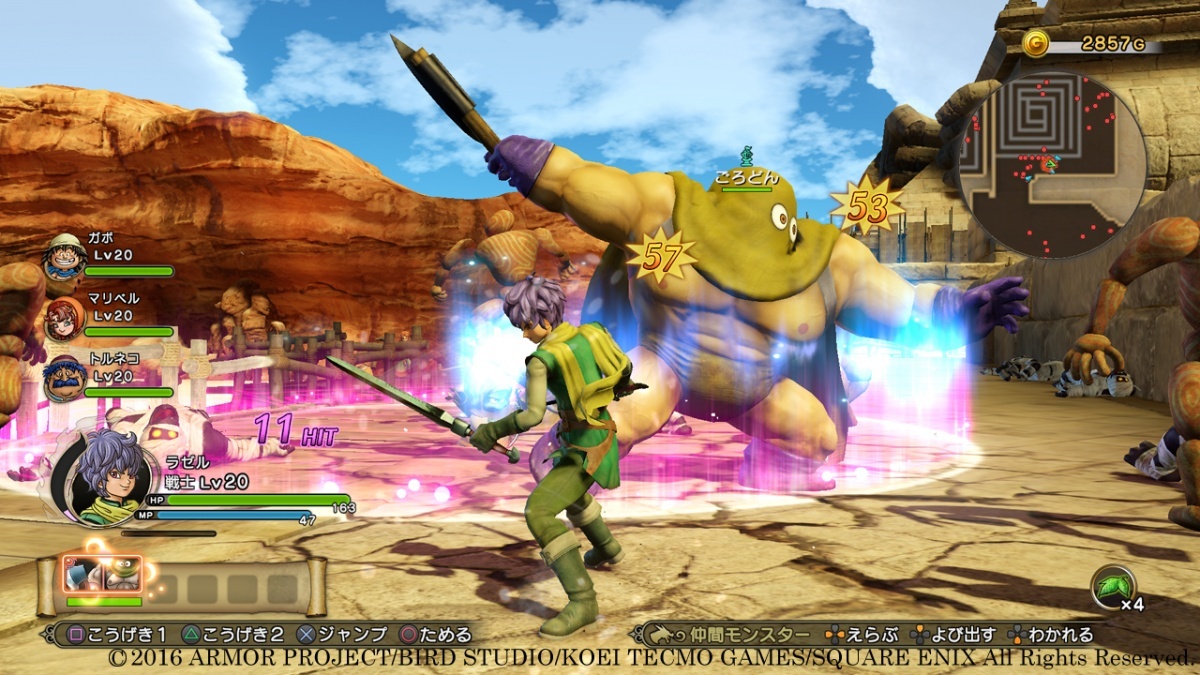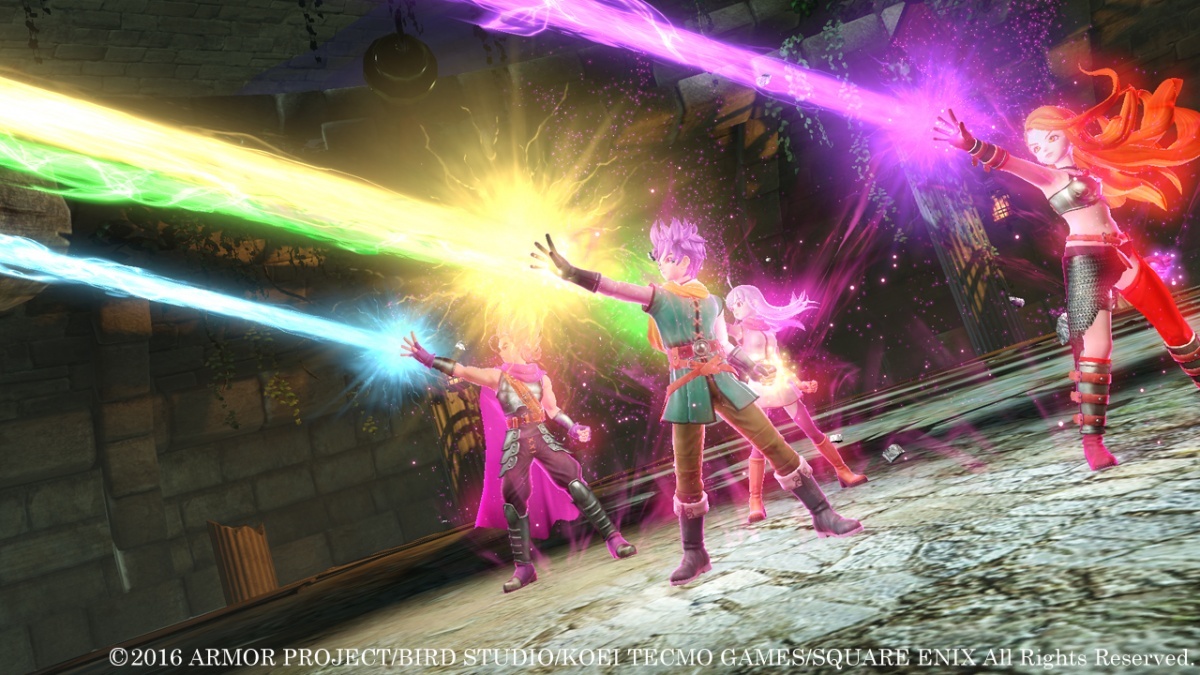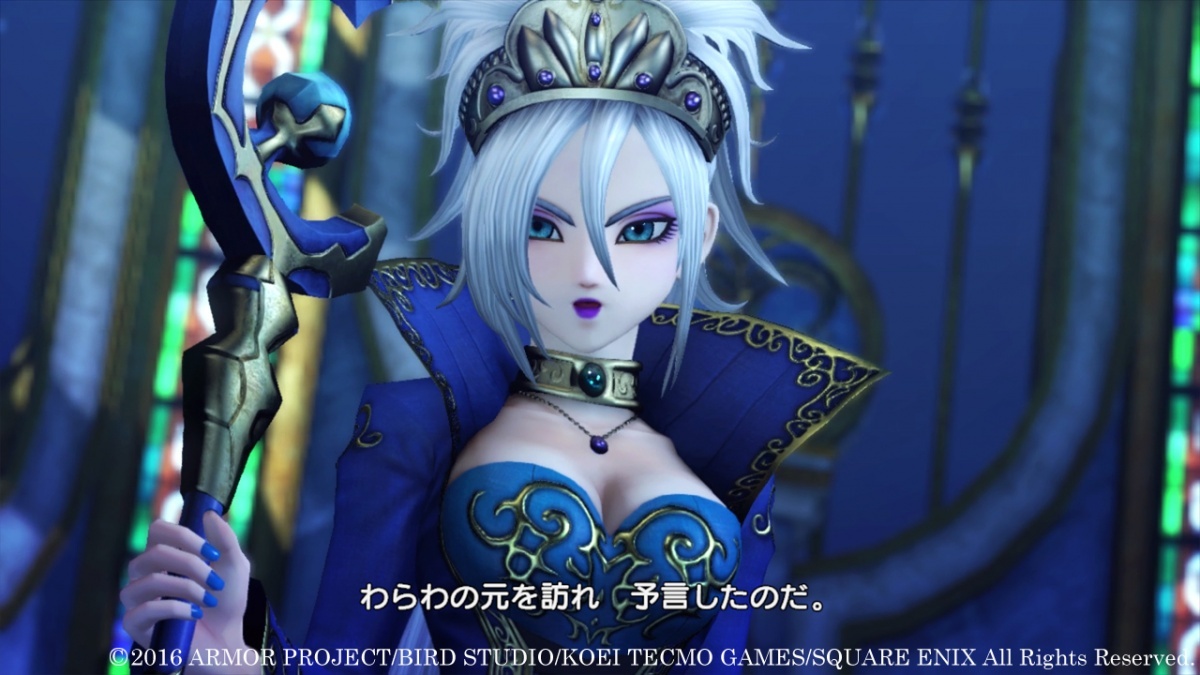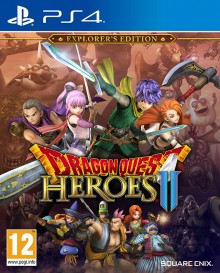Dragon Quest Heroes II: The Twin Kings and the Prophecy's End (PlayStation 4) Review
By Drew Hurley  11.06.2016
11.06.2016

The Dragon Quest series is arguably one of the biggest and most popular franchises to ever come out of Japan. There are eleven numbered entries in the series at current count, plus a massive number of spin-off titles, too... not to mention cafés, bars, orchestral shows, and even theme park rides in Universal Studios this year to celebrate the birthday of the saga. The first Heroes title, Dragon Quest Heroes: The World Tree's Woe and the Blight Below, introduced the franchise to the Musou genre and was generally well received. Now a sequel has arrived, but what does it add? Cubed3 finds out…
Rather than being a continuation of The World Tree's Woe and the Blight Below, this is a whole new tale. Like the lands of Westeros, this story finds a land separated into seven kingdoms, done so by its leaders to follow an ancient prophecy. Now, war and strife has broken out between the kingdoms and a group of adventurers, made up of members of each kingdom, working together to unite the kingdoms and bring peace between them. As in the previous title, the game has two protagonists to choose from, male (Razel) and female (Tereshia) - the same story but from two different points of view.
These types of spin-offs are always a real joy for fans of the source material, and this is no exception, with fan favourite elements and characters in abundance throughout. The now iconic designs from legendary Mangaka, and creator of the phenomenal Dragon Ball series, Akira Toriyama, are back, the style now becoming synonymous with the franchise.

As opposed to most Musou titles, this isn't a series of stages broken up with FMVs. Instead, this is more laid out like a traditional Dragon Quest, with a huge world made up of numerous massive fields and dungeons. Before heading out into this vast world, there is Zebion, the main town and hub where the adventurers can speak with townsfolk, establish party set-ups, choose equipment and skills, partake in multiplayer, and plenty more besides. Once outside of Zebion, the massive fields await. Massive? Positively gargantuan at times, actually, especially considering there are so many hidden chests and secrets to ferret out. Across each of the areas are numerous environmental obstacles that require a specific character and ability to progress past. At times, however, the fields can feel somewhat sparse, with periods of time spent running around and exploring the areas, trying to sniff out secrets and treasures. It's best to simply progress through and return to the areas using "Invitation Stones." These are monuments unlocked throughout the world as the story progresses, allowing the party to warp to their locations.

The world's design isn't the only thing that hearkens back to the roots of the series; the mechanics are RPG through and through. Characters gain XP from their monster slaying and gain levels as they do so. These give Skill Points to unlock a vast range of class specific abilities. Each class also has a set list of weapons they are able to use and, by using these weapons more and more, the weapon "proficiency" increases. This, too, grants weapon specific powers and abilities, and because of this, every character recruited has plenty of skills and abilities to choose from and work towards, whilst the two protagonists have exponentially more.
The two protagonists are special in that they aren't tied down to a single class like the rest of the heroes, instead being able to switch between them all. Both start as warriors but soon enough they are able to alter this when within the walls of Zebion. Each class begins at level one again but also gives access to all of the unlockable skills and abilities from each class and, of course, gain the weapon proficiencies of each class' preferred armaments.
The combat in-game reaches a great balance between Musou and RPG, between the aforementioned plethora of abilities and the frantic mashing action. The party is made up of four characters that can freely be switched between, there are the usual HP and MP bars along with something called a "Tension Bar" that when filled gives the series' signature massive attacks, able to decimate enemy forces with devastating effect. There are also extra aspects to the combat, gargantuan Kaiju style clashes between huge monsters, and a complete overhaul of the Monster Coin system. Defeated Monsters can drop coins that can be used to summon the monster, which can then take one of three forms. Assist monsters will appear to use a special ability then quickly disappear. Support monsters join the fray and fight alongside the heroes until killed. Transform monsters - true to their name - turn the current party member into the monster for a limited time.

All this fun can be had in single player and multiplayer. Within Zebion is the multiplayer desk from which up to four players can take on story quests together or even take on the Space Time Labyrinth. This is a series of exclusive challenges filled with familiar enemies that can be unlocked by finding pieces of the map that leads to the labyrinth across the course of the story mode. The multiplayer is fun but flawed, and available only online, so no couch co-op here, but at least there's cross-play. There's no text communication either, instead using the age old Japanese online gaming method of communication, stock phrases, and emotes, and so on...
As just mentioned, cross-play is available, as is cross-save functionality, with this title also hitting the PlayStation Vita and PlayStation 3. The PS4 version is definitely the definitive version, though, with the remote play and sharing abilities that are now the standard with most PS4 games, combined with 60fps and full HD.

Cubed3 Rating
Great - Silver Award

Dragon Quest Heroes II: The Twin Kings and the Prophecy's End is a superb take on the Musou series, marrying some of the best elements of Musou and JRPGs. Fans of the series will find much and more to keep them happy across the 25-hour or so story, and there's plenty to do post-game to keep this alive. There are some slight issues and flaws, but overall a fantastic game. With no Western release yet announced, this review is of the Japanese language version and a decent grasp of the language is required here.
Dragon Quest Heroes II (as well as other Dragon Quest games in the series) can be bought from Play-Asia.com in disc format today, or credit can be bought for the PlayStation Network, along with many other great digitally released titles on the likes of Nintendo's eShop, on PC via Steam, and so on, across all regions.

![]() 8/10
8/10
![]() 0
(0 Votes)
0
(0 Votes)
 Out now
Out now  Out now
Out now  Out now
Out now  Out now
Out now Comments
Comments are currently disabled

 Sign In
Sign In Game Details
Game Details Subscribe to this topic
Subscribe to this topic Features
Features





 Top
Top

